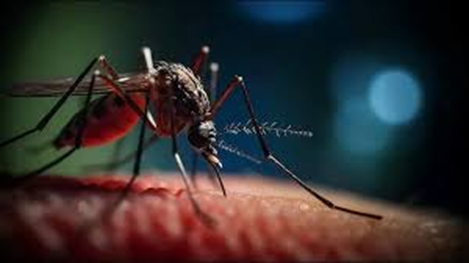- Courses
- GS Full Course 1 Year
- GS Full Course 2 Year
- GS Full Course 3 Year
- GS Full Course Till Selection
- Answer Alpha: Mains 2025 Mentorship
- MEP (Mains Enrichment Programme) Data, Facts
- Essay Target – 150+ Marks
- Online Program
- GS Recorded Course
- Polity
- Geography
- Economy
- Ancient, Medieval and Art & Culture AMAC
- Modern India, Post Independence & World History
- Environment
- Governance
- Science & Technology
- International Relations and Internal Security
- Disaster Management
- Ethics
- NCERT Current Affairs
- Indian Society and Social Issue
- NCERT- Science and Technology
- NCERT - Geography
- NCERT - Ancient History
- NCERT- World History
- NCERT Modern History
- CSAT
- 5 LAYERED ARJUNA Mentorship
- Public Administration Optional
- ABOUT US
- OUR TOPPERS
- TEST SERIES
- FREE STUDY MATERIAL
- VIDEOS
- CONTACT US
Oropouche Fever: A Mosquito-borne Disease
Oropouche Fever: A Mosquito-borne Disease
02-07-2024

Italy recently reported its inaugural case of Oropouche fever, a mosquito-borne disease.
What is Oropouche Fever:
-
Etiology and Causation:
- Oropouche fever is an emerging zoonotic arboviral disease caused by the Oropouche Virus (OROV).
- OROV belongs to the orthobunya virus family.
-
Incubation Period:
- The incubation period for Oropouche fever typically ranges from 4 to 8 days.
-
Historical Discovery:
- Oropouche fever was first discovered in Trinidad and Tobago in 1955.
-
Symptoms:
- Symptoms of Oropouche fever are often the same as other viral infections, including fever, headache, muscle pain, joint pain, and nausea.
- Severe cases can lead to meningitis or encephalitis, posing significant health risks.
- Most patients recover within a week, while some may experience lingering symptoms for several weeks.
-
Transmission:
- Oropouche fever is transmitted to humans through the bite of an infected midge (small fly) or mosquito.
- Factors such as urbanization, deforestation, and climate change contribute to the proliferation of its vectors, increasing the risk of transmission.
-
Treatment Options:
- Currently, there are no vaccines available to prevent Oropouche fever.
- There is no specific treatment for Oropouche fever.
- Medical care focuses on managing symptoms and promoting recovery.
What are Viruses:
- Viruses are submicroscopic infectious agents that can infect all forms of life, from animals and plants to microorganisms, including bacteria and archaea.
- They are the most abundant biological entity on Earth and are found in almost every ecosystem.
Key points about viruses:
-
Non-living entities: Viruses are not considered living organisms because they cannot reproduce on their own. They need to infect a host cell and use its machinery to replicate.
-
Structure: A virus consists of genetic material (DNA or RNA) enclosed within a protein coat called a capsid. Some viruses also have an outer envelope made of lipids and proteins.
-
Replication: Viruses enter host cells and hijack their cellular machinery to produce new viral particles. This process often leads to the death of the host cell.
-
Disease-causing agents: Many viruses are pathogenic and cause a wide range of diseases in humans, animals, and plants. Some common examples include the flu, COVID-19, HIV/AIDS, measles, and the common cold.
Types of viruses:
There are many different types of viruses, classified based on their genetic material, shape, and host range. Some common types include:
-
DNA viruses: These viruses have DNA as their genetic material. Examples include herpesviruses, adenoviruses, and poxviruses.
-
RNA viruses: These viruses have RNA as their genetic material. Examples include coronaviruses, influenza viruses, and retroviruses.
-
Bacteriophages: These viruses infect bacteria and are used in various applications, including phage therapy and genetic engineering.
Importance of studying viruses:
Studying viruses is crucial for understanding how they cause diseases, developing effective treatments and vaccines, and exploring their potential applications in medicine and biotechnology.
Must Check: Best IAS Coaching In Delhi



